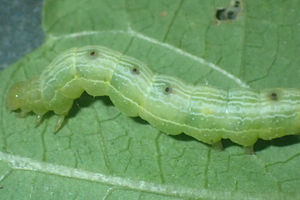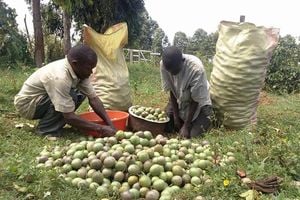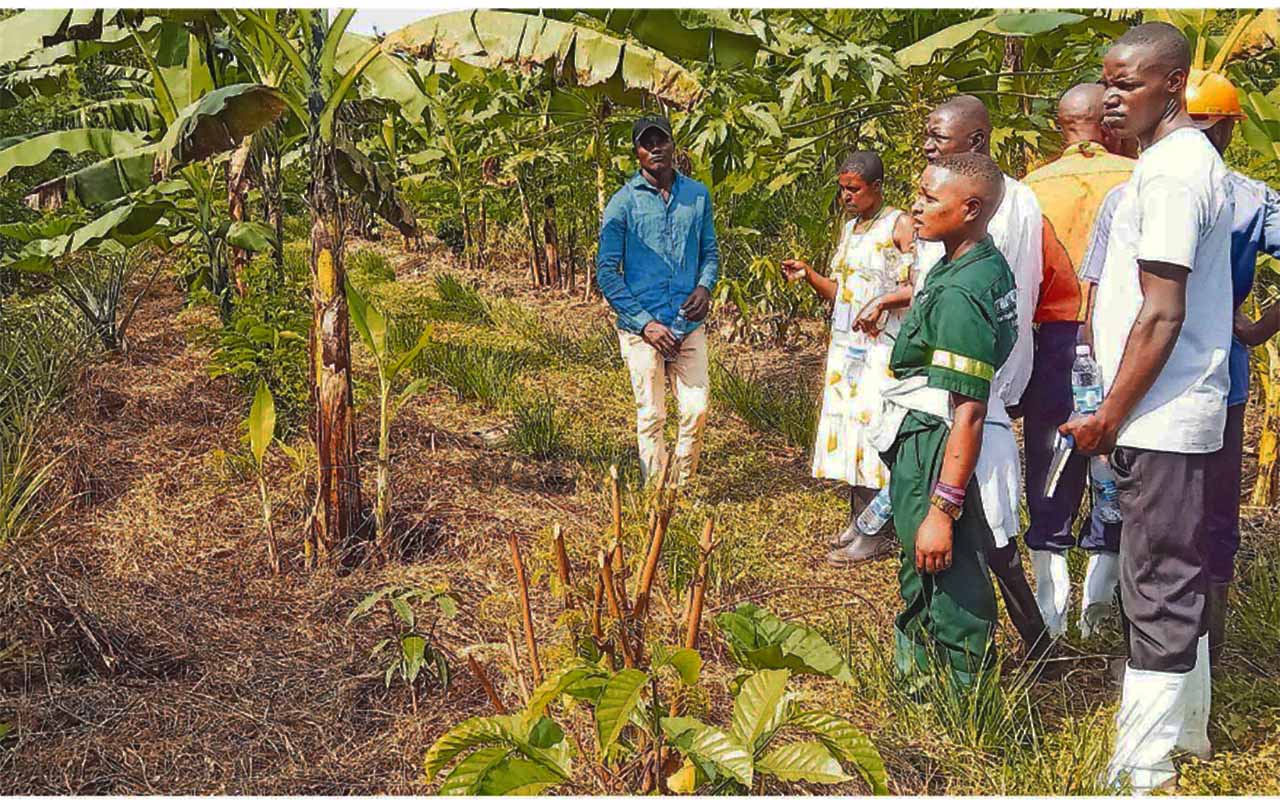
Beth Wairimu inspects strawberries at her home. PHOTO | NMG.
By Joe Wolukao
Angela, June bearing, Day neutral, Ever bearing and Seascape are not varieties of strawberries, but categories, just like tribes for people.
Within the broader groups, however, we have varieties. There are over 40 varieties of strawberries, but three namely Chandler, Pajaro and Selva are very popular in the country.
The three fall in the hybrid category and are mainly grown for export. Below are the varieties:
Pajaro: It is a fast-growing variety, popular for large berries and good flavour.
Chandler: This is a high-yielding plant that produces large and firm fruits within 60–75 days. The fruits are not only large but have good flavour and firm skin. Selva: A neutral day variety producing small berries with good flavour and colour. Fern: A neutral day variety with heavy yield of large fruits but lighter than all the others.
Aiko: Uniform, large, long fruit of conical shape, with a pointed end, firm flesh, pale red colour, slightly sweet, very resistant to transport and high yield.
Douglas: Matures early, has clear foliage and offers good fruits of elongate conical shape and orange-red colour. It has firm flesh, which is red-coloured with a pink centre, and a good taste.
The crop is high-yielding. Other varieties include Nanandreas, Albion, Red glory, Manhattan.
Site selection
If you want to get nice big, well coloured fruits from your back garden, the best place to plant them is in the sunniest part.
Strawberries grow better in a garden site that is open to direct sunlight most of the day.
You should try to avoid very low-lying areas that are prone to frosts. Avoid planting where tomatoes, eggplant, potatoes, peppers, raspberries or black berries have been grown in the last three years.
These plants can act as hosts for fungi and insect pests that build-up in the soil unless you place them on at least a three-year rotation schedule. Strawberry plantings can remain productive for three to four fruiting years.
It is possible to minimise the onset of disease and insect problems through rotation of the strawberry patch from one site to another, every time you carry out a new planting.
Propagation
Strawberries are normally propagated from split or runner plants, which are rooted. Splits or runners should be selected from vigorous, high-yielding and disease-free plants.
The crowns may be divided to get new plants but this is somewhat more difficult.
Make sure you get disease-free plants from a reputable nursery since it is not a good idea to utilise your own plants or neighbour’s. Your extension agent would be able to give you advice on suitable sources of planting material.
Transplanting
Transplanting time will vary from region to region. Before planting the strawberries, soak the root for about an hour or two but not longer, and then plant them right away.
A cool cloudy day is the best to plant. The plant should be placed with the crown at the soil surface or the roots may dry or the plant may rot.
The hole should be deep enough so that the roots can be placed straight down into the hole.
Remove any damaged roots before planting.
Place the plant at the proper level into the hole and fill it with the soil.
Put the soil down firmly and keep the plant well-watered for two weeks after planting.
Planting density
Spacing and row filling have effect on fruit yield: The common practice is 30cm between plants and 60cm between rows (90 cm for the vigorous cultivars).
Planting is done such that the mid-crown is at the soil line. Deeper planting encourages root rots and leaves take longer to emerge. Transplanting can be done by hand or by a planter.
Raised bed
Planting on raised beds promotes good water drainage and larger berries are also encouraged to develop. Beds should be 60 – 75cm wide, 100 – 120cm apart with plants 15–30cm apart over the beds.
Runners are placed over the beds until wide rows are developed.
Irrigation
Irrigation is critical immediately after planting for crop survival. As the plants are shallow rooted, they require 2.5cm of water per week for 12 weeks per growing season.
Irrigation increases yields by 2.5 times (250 per cent), boosts runner rooting, growth rate, flower bud formation, useful in pesticide application, frost control, prolongs harvest and cools the crop to prevent sunscald.
For this purpose, sprinkle at noon so that water is not moved from fruit into leaves for transpiration.
Fertilisation
The strawberry plant is shallow-rooted and requires fertilisation during the growing season to keep it vigorous.








